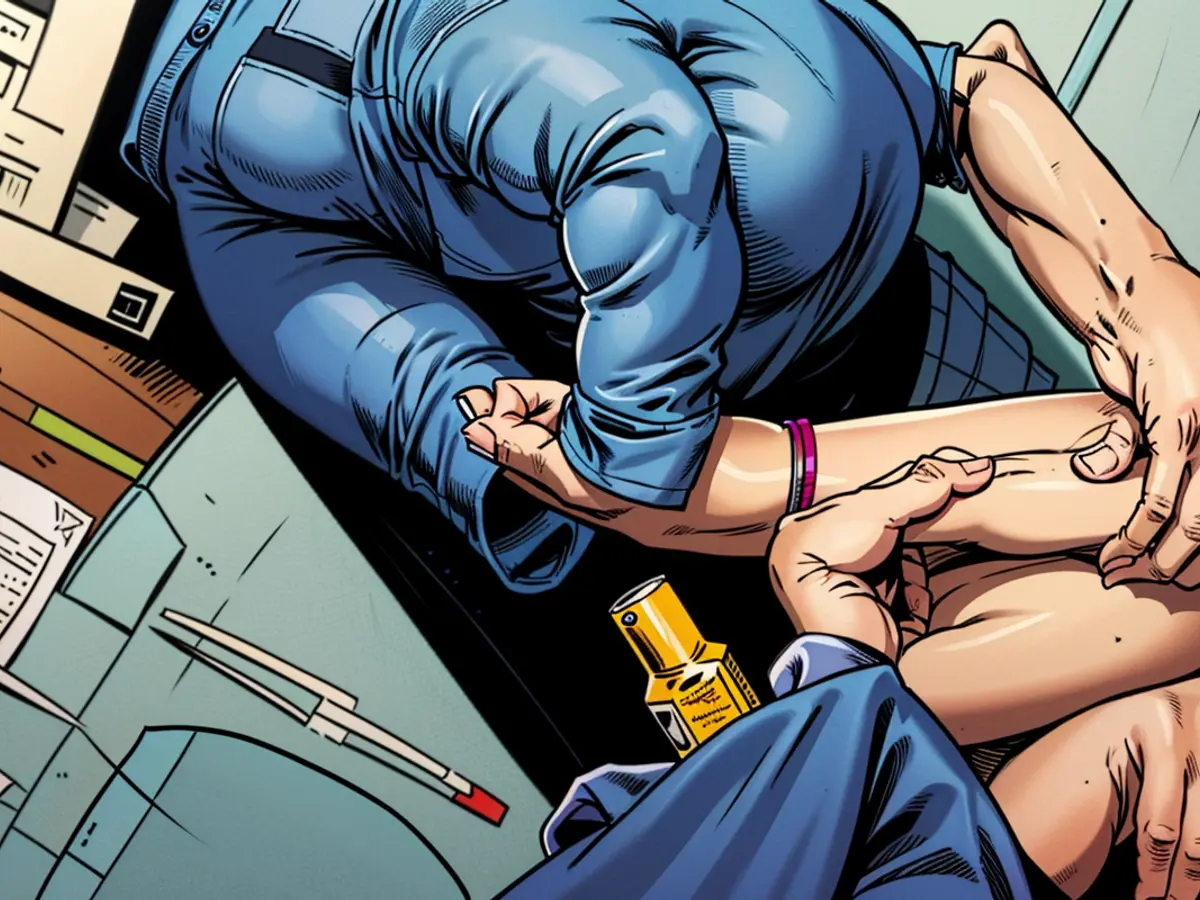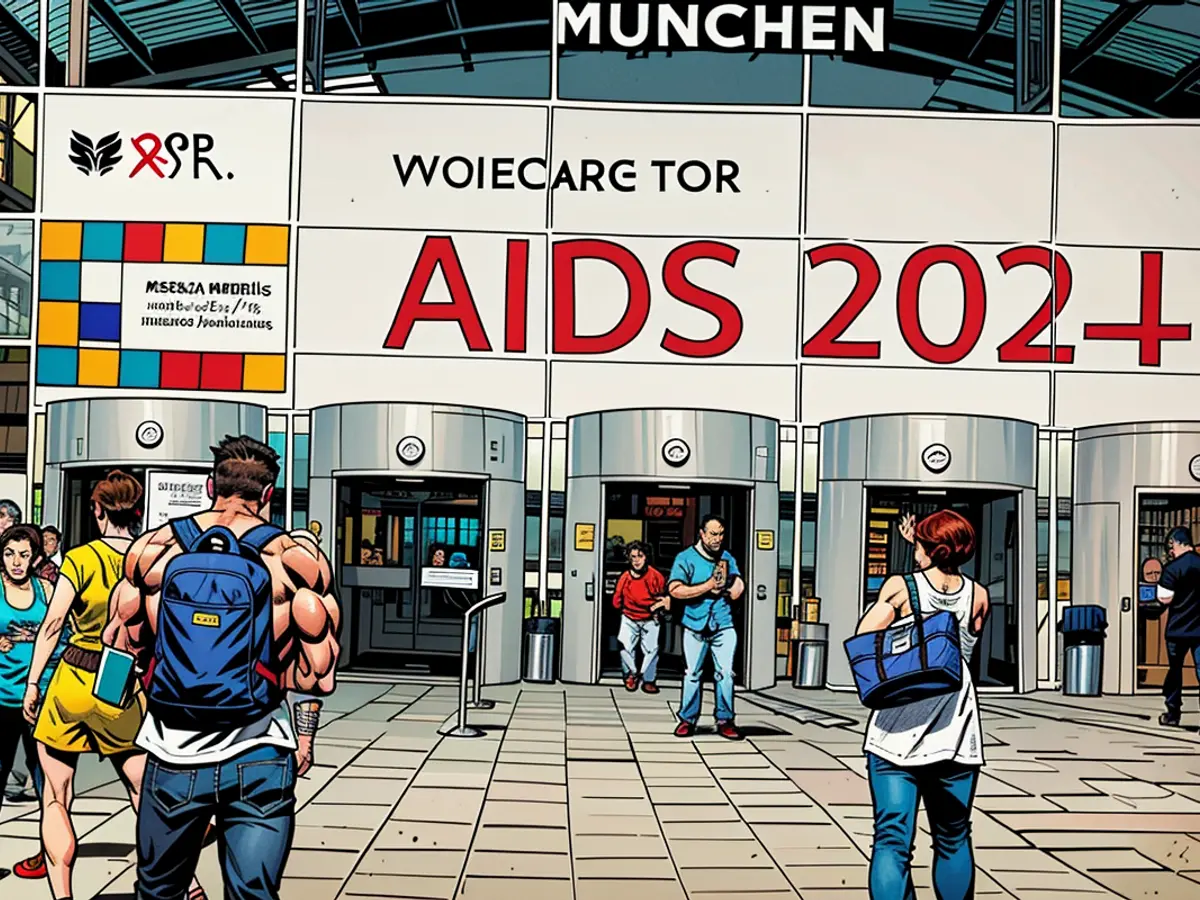The UN issues a stern warning - Previous progress in the fight against Aids and HIV threatened
Despite significant successes in the fight against HIV/AIDS, the United Nations are still far from achieving their goal of largely overcoming the immune system disease by 2030. "The way to end AIDS is no secret. It is a political and financial decision," emphasized UNAIDS at the release of its new report. Every minute, a person still dies from AIDS-related causes.
If leaders now increase funding and protect the rights of particularly affected groups, the UN's goal for 2030 could still be reached. These groups include men who have sex with men, transgender people, sex workers, and people who inject drugs.
Budget cuts, discrimination, and a growing infringement on human rights have threatened previous progress, warned UNAIDS ahead of the World AIDS Conference in Munich. Successes in the fight against AIDS have been particularly notable in sub-Saharan Africa, although the numbers remain high. However, infections have been increasing in Eastern Europe and Central Asia.
Far from Interim Goals
According to the report, approximately 1.3 million people became newly infected with the virus last year. The interim goal is to reduce annual new infections to under 370,000 by 2025 – in 2023, the number was still 3.5 times higher.
The number of AIDS-related deaths dropped to 630,000, which is only half of what it was in 2010. However, the world is not on track to reach the interim goal of reducing AIDS-related deaths to under 250,000 by 2025.
Even though the number of people receiving antiretroviral treatment has increased: Still, nearly every fourth infected person does not have access to life-saving medications – which also prevent the spread of the virus. Children are particularly disadvantaged: Only 57% of children under 15 have access to treatment, compared to 77% of those aged 15 and above.
The UN aims to reduce new HIV infections and AIDS-related deaths from 2010 to 2030 by more than 90%. The decisions made by heads of state and government this year will determine whether this goal is reached and whether AIDS will no longer be considered a public health threat by 2030.
Millions of Lives to Save
"Heads of state and government can save millions of lives, prevent millions of new HIV infections, and ensure that all people living with HIV can lead healthy, fulfilling lives," urged Winnie Byanyima, Executive Director of UNAIDS. Sufficient funding for HIV response and the protection of human rights for all are crucial.
According to the report, the number of people living with HIV who require lifelong treatment could stabilize at around 29 million by 2050 if the necessary measures are taken now. A study suggests that the number of people requiring long-term support could rise to 46 million if HIV is not adequately addressed. In 2023, it was 39.9 million.
Success in Southern Africa, Concerns about Eastern Europe
HIV infections have decreased globally by 39% since 2010, according to UNAIDS. In Eastern and Southern Africa, the decrease was even more significant, at 59%. However, infections have increased in three regions: Latin America, the Middle East and North Africa, and most notably, Eastern Europe and Central Asia. In the latter region, HIV control efforts seem to be in danger due to political and financial challenges.
In Eastern Europe and Central Asia, there were 140,000 new HIV infections reported in 2023, a 20% increase compared to 2010. The majority of new HIV infections occurred in Russia, Ukraine, Uzbekistan, and Kazakhstan. This region is the only one globally where the number of AIDS-related deaths increased since 2010, by 34% to 44,000 deaths in 2023. Testing and treatment programs are not readily available for many people in the region, particularly for the most affected groups such as sex workers, men who have sex with men, transgender people, and people who inject drugs.
Stigmatization of AIDS hinders access to help
UNAIDS reported that the challenges in Eastern Europe and Central Asia are enormous due to restrictive laws, stigmatization, and insufficient expansion of HIV prevention measures for at-risk populations.
Stigmatization and discrimination against these groups also hinder access to prevention and treatment in other places. These people and their sexual partners made up a higher proportion of global new infections than in 2010, which was 45%. In 2022, this proportion had already reached roughly 55%. No number was available for 2023.
The most effective and affordable method for HIV prevention remains the use of condoms. However, experts report that they are used less frequently. The access to prevention methods such as the pre-exposure prophylaxis (PrEP) is limited, except in wealthy countries.
Financial resources are lacking
According to UNAIDS, global financing for the fight against HIV in low- and middle-income countries is declining. In 2023, these funds decreased by 5% compared to the previous year, amounting to 19.8 billion US dollars (18.2 billion Euros). They were 9.5 billion dollars short of the required amount of 29.3 billion US dollars by 2025. Domestic financing in poorer countries was also reduced by 6% from 2022 to 2023.
Sabine Dittmar, Parliamentary State Secretary at the German Federal Ministry of Health, stated that her ministry would provide UNAIDS with around 6.75 million Euros in 2024. She was glad that these funds could be maintained, she said at the presentation of the new figures in Munich. Germany also engages in the years 2023 to 2025 with around 1.4 million Euros at the Global Fund to Fight AIDS, Tuberculosis, and Malaria.
- The report from UNAIDS highlighted that despite the decrease in HIV infections in Eastern and Southern Africa, there's been an increasing trend in Eastern Europe and Central Asia, particularly in Russia, Ukraine, Uzbekistan, and Kazakhstan, where drugs used for HIV treatment remain a challenge due to financial and political difficulties.
- At the World AIDS Conference in Munich, UNAIDS raised concerns about the threat to previous progress in the fight against HIV/AIDS due to budget cuts, discrimination, and human rights infringements, warning that these issues could affect the distribution of life-saving medications, such as antiretroviral drugs, to those who need them most.
- The United Nations AIDS (UNAIDS) report revealed that new HIV infections have been increasing in Eastern Europe and Central Asia, and one of the reasons for this is the challenge of providing access to essential services, such as HIV testing and treatment, to particularly affected groups, including people who inject drugs, in this region.









